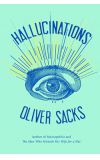
05 Dec 2012 23:32:25
Driving along a highway, a woman detects a weird smell: it resembles "shit, puke, burning flesh and rotten eggs". It pursues her for miles and days.
Trapped in a crevasse after falling from an ice ledge in the Andes, his leg broken, a mountain climber hears "a clean and sharp and commanding" voice which obliterates all the chatter in his own mind: if he obeys it, he knows he will be all right. He is.
I have long thought of the neurologist Oliver Sacks as the greatest living ethnographer of those fascinating tribes who live on the outer and still largely uncharted shores of the land of Mind-and-Brain. Here, inhabitants suffer from strange talents: they mistake their wives for hats, can communicate better with animals than humans, have phantom limbs, outlandish tics or prodigious memories, artistic and musical skills. Other more familiar abilities may be compromised, but for all that their humanity is great.
Sacks's reports from these climes are filled with scintillating detail. He has an ability to evoke on the page the fullness of a life that includes yet moves beyond whatever "peculiarity" it may also contain. In this he is like the best of 19th-century doctors: a humane physician interested in a full clinical case, a patient history, and not merely the location of a surface symptom to be classified as a disease and somehow eradicated. Sacks himself cites that earlier neurologist, Sigmund Freud, and the wonderfully named Edward Liveing, author of an 1873 treatise on migraine, as inspirations.
An anthropologist on Mars, to cite the title of an earlier collection of seven case studies, Sacks is also that paradoxical character, the "participant observer". Not only does he shadow his patients' lives outside the consulting room to observe their condition fully and clearly, but like a novelist he also empathises so markedly with them that he develops or finds kindred states in himself. In Hallucinations he charts the many strange forms that hallucinating – this reality-mimicking misperception, whether visual, olfactory or auditory – may take. He is keen to destigmatise hallucination: hearing voices and seeing what isn't there is not necessarily a sign of schizophrenia or mental aberration but part of the grand vista of common enough human experience. Many hallucinators are not persecuted by their "visions" or even uncomfortable in their presence. In past times hallucinations were not even considered aberrant: take Joan of Arc or the hauntings of peasant lore.
All kinds of people, Sacks shows, experience hallucinations: ordinary sleepers, migraine sufferers, epileptics, alcoholics, drug-takers or those deprived of them too abruptly (and we're not talking just street drugs), the delirious, and that cohort with whom Sacks now often works, the ageing. As the old lose their sight or hearing they may begin to hallucinate, but they're wary of admitting it for fear of being registered as demented.
Though neuroscience can still only shed a partial light on why we might perceive what isn't there, the mapping technologies of MRI and fMRI have shown us where in the brain such hallucinatory activity takes place and how it is related to common perception.
But Sacks is less interested here in neurological investigation or even a complicated phenomenology of individual conditions. The book could almost be renamed "100 Varieties of Hallucinatory Experience: From Dancing Patterns to Post-Traumatic Stress Disorder", in which terrifying nightmare scenes intrude themselves on the sufferer's consciousness and won't be put to rest, or to language. There are also altered states and visions of that perhaps biologically necessitated other "presence", who is sometimes a doppelganger, sometimes God.
Some of this material, like that culled from William James's Varieties of Religious Experience, or Breuer and Freud's Case of Anna O, the "hysteric" who gave birth to the talking cure, will be well known; some less so. In one of the liveliest sections of this hallucinator's smorgasbord, Sacks narrates his own early days as an LSD, mescalin and amphetamine user – an activity he only discontinued after he was taken over by a panic-inducing set of visions. These included seeing a huge proboscidean head, a busload of glittering insect eyes and flapping buildings. Like Alice in her Wonderland, these generous annals make us all hallucinators of the most vivid kind.

